You are using an out of date browser. It may not display this or other websites correctly.
You should upgrade or use an alternative browser.
You should upgrade or use an alternative browser.
Beethoven Violin Concerto Op 61
- Thread starter Todd A
- Start date
Todd A
pfm Member
Reaching way back in time, Josef Wolfsthal and Manfred Gurlitt with the Berlin Philharmonic go next. Wolfsthal was something of a Wunderkind who stayed that way, having died at 31. This recording is buried in Volume 20, Historic Recordings, of the last DG Beethoven Edition, and was recorded in 1929. The majors do have some advantages that newer labels can never match. Anyway, the first thing one notices is the super-peppy tempo of the Allegro ma non troppo, coming in at under 22 minutes. The timp sounds pretty big, and the sound is distant and dark, but the ears adjust. Wolfsthal's entrance is light, pure, and clean. He plays without tons of vibrato, and even in the context of an early electrical era recording, his tone sounds small. Rather than let some notes linger, he tends to be abrupt. There's an elegance and reserve, but also an old-fashioned sound and sweetness, all while staying light and quick, that's quite fine. Where Wolfsthal sets himself apart from the pack is in the cadenza. It's by Joseph Joachim, and Wolfsthal plays it with gusto, a rustic sensibility combined with urbane hyper-sophistication, and brazenly virtuosic flair. Yowza! The Larghetto stays on the taut side, but also sounds very beautiful. It's an almost perfect blend of classical restraint and romantic beauty, and it flows so perfectly that time becomes no issue at all - it's not too fast, it's not too slow, it's just right, and it has just the right dollops of portamento. Wolfsthal opts to take the Rondo at a nice tempo that sounds more leisurely than it actually is, which is quite a treat! He and the orchestra sort of bounce along, and then Wolfsthal soars - but not too much - and somehow one senses the structural inevitability of everything that is coming while it still sounds fresh. It is easy to listen past ancient sonics and just enjoy this recordings. Just superb. Wolfsthal is one of the great "what-ifs" of the recorded era.
Todd A
pfm Member
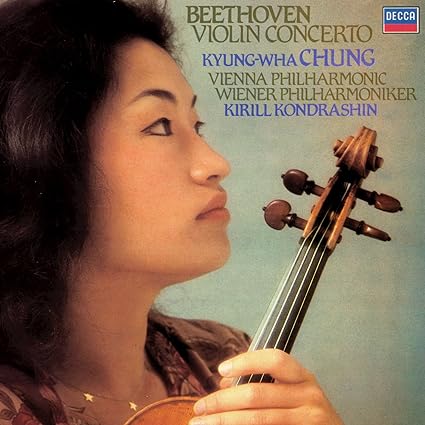
Kyung-Wha Chung and Kirill Kondrashin, with Vienna in the background. The leisurely tempo Kondrashin opts for in the the opening of the Allegro, with heaps of vibrato, sets the stage for Chung. She starts off slow and attractive, then plays the ascending passage nicely, but as she descends she creates a musical effect where her playing floats down like a leaf. Nice. When she gently and slowly ascends again, it sounds light and ethereal and lovely. She handles the cadenza nicely enough, and the entire movement has a flowing and inevitable feel. Chung and Kondrashin play the Larghetto at a relaxed 9'51", but it maintains a nice degree of tension, and Chung plays with no little beauty. The Rondo is likewise a bit relaxed, and if anything, Chung really delivers on her approach, playing quite splendidly. It's strange, and I can't put my finger on it, but Chung obviously plays well and some of her personal touches are quite lovely (eg, that descending passage in the Allegro), but overall the recording doesn't click with me.
Todd A
pfm Member
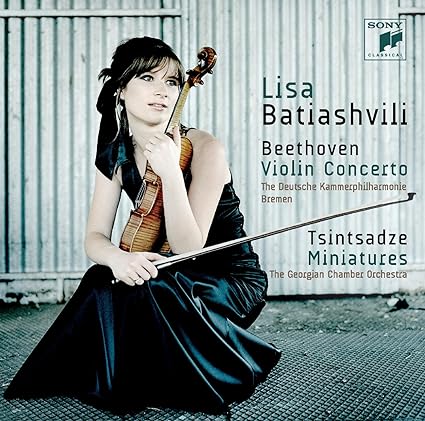
Lisa Batiashvili conducting the Deutsche Kammerphilharmonie Bremen. The young and bold Ms Batiashvili leads the closely recorded small band in such a way as to make it sound not so small. The opening tutti has ample drive and oomph, and then it cedes to her as she takes over. And she does some fine things. She comes close to matching Chung's descending playing, and she keeps everything under exact control at all times. Her tone is attractive, and she nails everything. While not speedy, there's an inevitable forward momentum much of the time that lends energy without tipping into a potentially overbearing nature like Tetzlaff's approach in his first recording. Unsurprisingly, Batiashvili has no problem dispatching a clean and sometimes vigorous, sometimes attractive cadenza. The Larghetto is taken at a fairly brisk tempo and Batiashvili again plays very nicely, generating some truly lovely pianissimo playing, but here there's something of a lack of overall expression or depth. The Rondo is paced at a comfortable tempo, like the opener, yet it sounds quicker than it is, and the benefits of a chamber orchestra become clear as little details pop out more. (Paavo Järvi had already helped forge the chamber orchestra into a high end ensemble, so Ms Batiashvili's backing is of the super-able variety throughout.) Batiashvili revs up her playing to good effect, coming more alive in the faster passages. Overall, this is a solid take in superb sound. I was happy to hear that Ms Batiashvili can direct well, too. Perhaps she and her husband can find a work transcribed for both their instruments and they can have a conduct-off.
Todd A
pfm Member
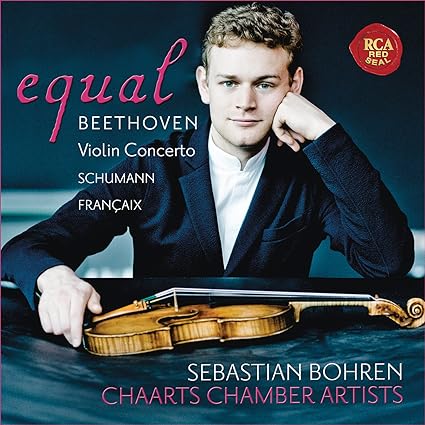
Sticking with the chamber orchestra vibe, I opted for Sebastion Bohren next, he of the Stradivari Quartet and the almost too beautiful tone. The Chaarts Chamber Artists sound leaner, sparser (much sparser), and even cleaner than Batiashvili's band, and Bohren, when he enters, likewise sounds leaner, but there's purity and beauty in his tone, and a lightness in his touch. And some zip. Bohren goes for a tempo approaching Heifetz, but the effect sounds markedly different. Overt showmanship for a big crowd is out, more restrained display for a small group is in. The extremely pared back orchestral forces make the piece sound more like an expanded chamber work, so some tonal beauty in tuttis goes AWOL, but the balance with Bohren's small-ish scale playing sounds just right, and it jells. Bohren does show that he can zip through the cadenza while beefing up his sound as needed. The Larghetto comes in at only 8'51", yet it never sounds close to rushed. Soloist and ensemble moves things forward in perfect harmony, and the small scale lets the oboes and clarinets sound clear yet not overpowering. It sounds less elevated, perhaps, than other versions, and certainly less lush, but it sounds sweet. The Rondo is likewise pretty quick, and the small scale helps even more here. The horn calls pop out, again without overwhelming - the balancing here is well nigh perfect - and the rhythmic vitality is unsurpassed. Bohren's fiddling takes on an almost rustic (or rather, super-refined take on "rustic") sound, with vibrant dance-like traits. I can't say it's a first choice, but it's high end stuff.
Todd A
pfm Member
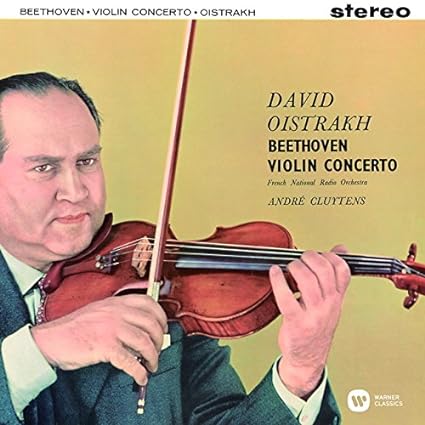
David Oistrakh and André Cluytens. Enough small scaled stuff, here's an old-fashioned, big-band, honkin' big sounding violinist approach. The Allegro starts with a slow-ish, weighty tutti, and Oistrakh enters with closely placed microphones and absolute command. He sees no reason to play fast, and up high, down low, moving between registers, playing trills, delivering a masterful cadenza, whatever, Oistrakh delivers high end playing. The Larghetto is broad and largely beautiful, with moments of serenity and transcendence from the soloist, while the Rondo is broad but quite bold and weighty, with enough pep from all involved. As undeniably fine as all the components of the recording are, this one just doesn't rock my world; as with so many other Oistrakh recordings, I respect what he does, I just don't love it.
Todd A
pfm Member
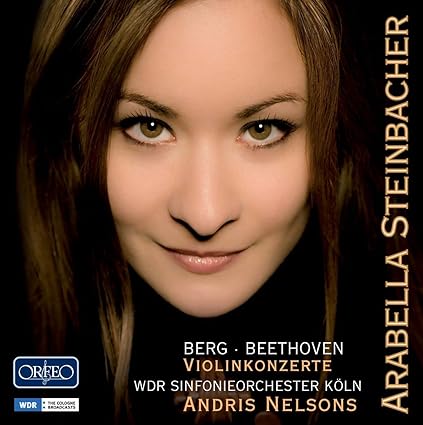
Arabella Steinbacher and Andris Nelsons. The duo start off with a slow-mo Allegro ma non troppo, clocking in at 26'32". Nelsons gets big, rich, weighty playing in the opening, and then Steinbacher enters with a rich tone and a relaxed pace. No need to push things. No need, indeed. Steinbacher almost entirely eschews flash and instead focuses on control and tonal beauty. It's lush and languid and lovely. It really ought not to appeal as much as it does, but it does. (Steinbacher shows off her virtuoso bona fides in the cadenza, for those who want that.) And Nelsons knows how to offer a weighty juxtaposition while obviously keeping the tempo relationships ship-shape. Steinbacher's style is tailor made for the Larghetto, which sounds fantastically beautiful, if perhaps not incredibly deep. It's a fair trade. The Rondo falls on the broad side, but it has to to fit in. Nelsons provides the weighty foundation while Steinbacher plays above it - not soars, not glides, but plays - and her tone again satisfies because of its richness. She again fiddles nicely when she has to, but this is a recording of no little luxuriance. Better than it should be.
Todd A
pfm Member
What's your rulling on Janine Jansen's recording with the Deutsche Kammerphilharmonie Bremen directed by Paavo Järvi?
I've never heard it.
Todd A
pfm Member
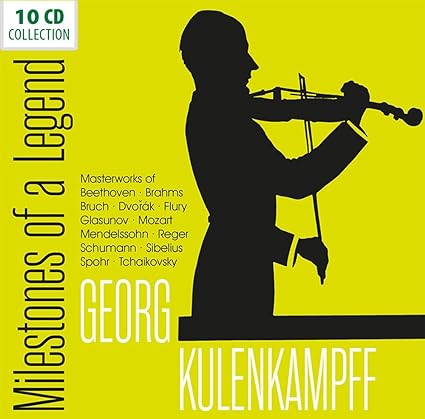
Moving back to shellac, it's Georg Kulenkampff and Hans Schmidt-Isserstedt with the Berlin Philharmonic. Middle of the road tempo-wise at twenty-three-and-a-half minutes, the Allegro ma non troppo opens with nice firmness and drive under HSI's baton, even if the source includes a little extra distortion to go with the noise. The orchestra drops off precipitously to allow for Kulenkampff's quite gentle and elegant first appearance. When he soars into the highest registers, his sound becomes almost more pure, and his trills, whenever they appear, sound magical. Perhaps more than Wolfsthal, his sound as recorded is precious and sweet, which the conductor and band off-set with vigorous accompaniment in the tuttis. The contrasts work very well indeed, and Kulenkampff's old-school touches of vibrato and portamento sound just right. The Larghetto sounds even better, Kulenkampff's at times ethereal playing elevating the music to something approaching a late Beethoven sound, while the Presto sounds light and small-scaled, especially from Kulenkampff. There's more of an old-world, old-fashioned comfortableness in his playing. His version sounds more old fashioned than Wolfsthal's. But it's almost as good. I don't know which transfer this is lifted from, but it does sound a bit sharp, but not as much as the old Telefunken release. Anyway, for a mid-30s recording, it sounds just fine.
Todd A
pfm Member
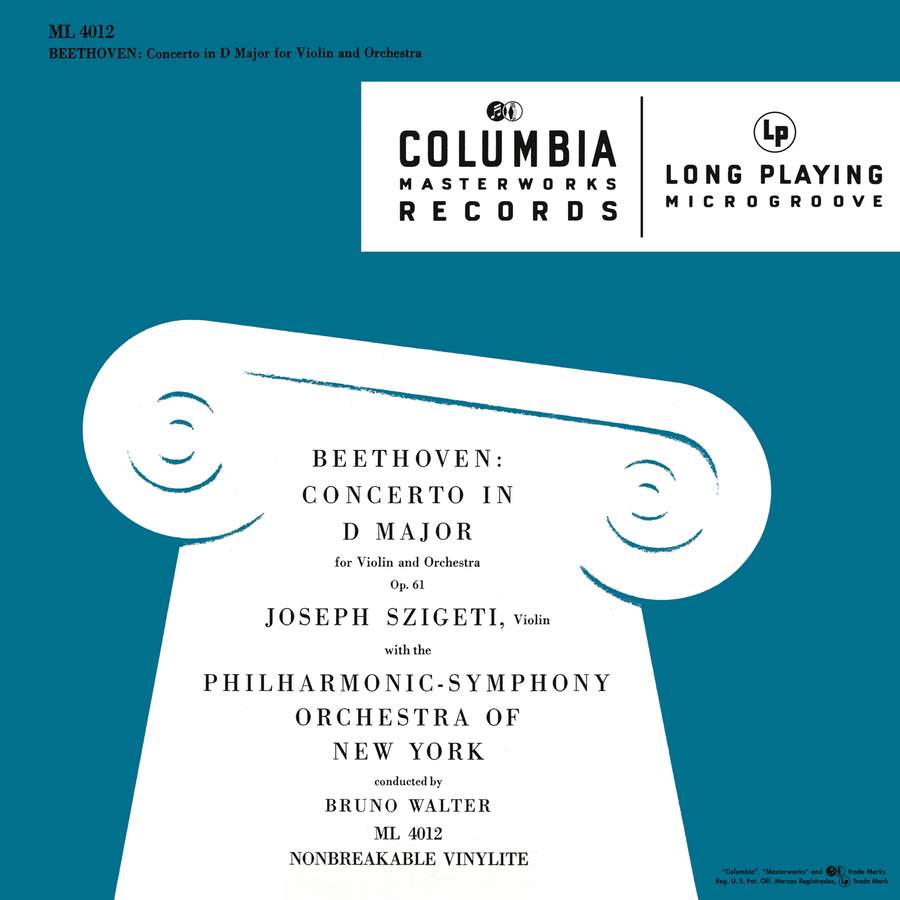
Staying mono, but moving to tape, Joseph Szigeti paired up with Bruno Walter. The Allegro ma non troppo falls on the brisk side at 22'32", and Walter demonstrates world class accompaniment skill by adjusting the overall tempo and approach to meld perfectly with such an approach, with weight and control. Szigeti can be overshadowed by Walter's direction, and his entrance and playing throughout the movement sounds less secure and tonally appealing than some other fiddlers'. His cadenza is old time rustic fun, though. The Larghetto ends up sounding better, with Szigeti playing in touching manner and Walter lending softened support. Szigeti's vibrato borders on the excessive, but then, it kind of should in this type of conception. The Rondo has ample energy, but it's not a high flying take like some others, but it sounds comfy for the listener. Not one of the greats, but really rather enjoyable.
Todd A
pfm Member
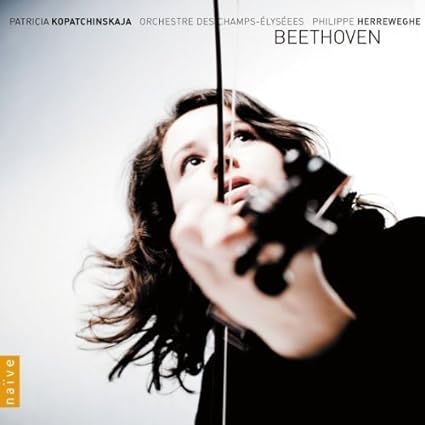
Wild woman Patricia Kopatchinskaja teamed with Philippe Herreweghe. Ms Kopatchinskaja is prone to having ideas and then executing on those ideas. Crazy, right? Herreweghe starts with a tutti that sounds like a scaled up version of what Bohren went for. The overall timing of 22'41" puts this on the swift side, and the winds are nicely prominent. Kopatchinskaja enters daringly slowly, then accelerates as she ascends, generating a lovely sound, and as the movement unfolds, she plays with an improvisatory and fantastic style, embellishing, stripping away vibrato for long stretches, and generally just letting rip. It's novel and fresh compared to so many other versions, though people more concerned with perceived traditional style may not like what they hear. Or maybe they will. The cadenza is even more likely to divide opinion. Kopatchinskaja opts for the Op 61a cadenza, which she transcribed herself again, and she wrote two violin parts, both of which she plays, which of course means overdubbing is used. It is definitely contrived, but it also definitely works, and it adds something unique to the survey. After the crackling, highly interventionist opener, Kopatchinskaja delivers one of the greatest imaginable Larghettos. Swift overall, it never really sounds it, and Kopatchinskaja plays just about as dolce as one can imagine when needed, yet she also plays with no little verve in some places. It comes off as a perfectly realized blend of middle and late Beethoven. Herreweghe's support is top notch; he gets great playing from the band, delivers finely scaled tuttis, yet also cedes to the soloist, and it ends with her cadenza, which both jars and sounds inevitable. The briefest of pauses leads to a Rondo where she leaps around in a Mendelssohnian way, adds rustic flair aplenty, and lightens the mood while still keeping things bold and inventive, yet still light. It's quite an accomplishment. It's brilliant. It's one of the best ever.
Todd A
pfm Member
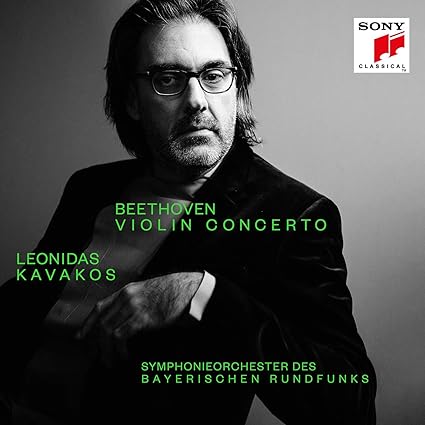
Leonidas Kavakos. Kavakos delivers one of the slowest of all recordings, coming in just under fifty minutes, and the opening Allegro tips the scales at 27'27". With the venerable Bavarian Radio Symphony Orchestra the backing band, Kavakos gets a slow, weighty opening tutti with quite lovely string playing. Whenever the orchestra speeds up, it packs a perfectly controlled wallop. Kavakos starts slow and keeps things slow. His playing sounds a bit cool but a lot perfect in every other sense. The ascending passages reach the musical ether, the trills sound exact, the vibrato, when applied, is perfectly executed and never excessive. The fluidity and continuity of his playing, slow as it is, is simply masterful. It lacks the ultimate expression of Kopatchinskaja or the other-worldly beauty of Repin, but sounds pretty darned engaged. Out of the slowness emerges a rendition of the Op 61a cadenza to rival anyone's. The double and triple stops have a weight and texture that makes his instrument sound oversized, and while he never pushes speed to the same extremes as some others, his control sounds more imposing than all but a few. The Larghetto, coming in at 11'31", is of the serene and transcendent sort. In terms of sheer beauty and expression, it almost matches Kopatchinskaja. The Rondo comes off as stately, and if some of the more rustic and rambunctious aspects go missing, Kavakos again delivers some exceptionally well controlled playing. I'm not exactly sure why I dig the concerto so much more than I his take on the Violin Sonatas, but there it is.
Todd A
pfm Member
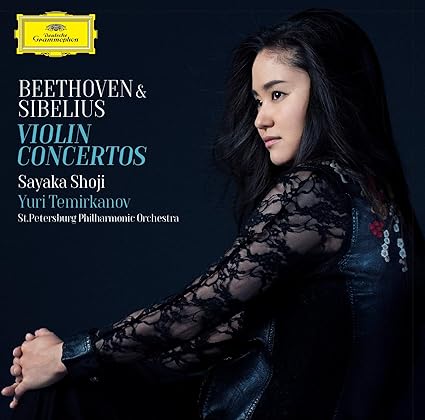
Sayaka Shoji and Yuri Temirkanov. This recording has been covered before in The Asian Invasion, but in broad terms, this moderately paced recording benefits from a somewhat romantic overall feel, superb tuttis led my Termikanov, who then knows how and when to back off to support his soloist, whose playing is not of the hyper-virtuosic sort, but is rather more focused on beauty and nuance. It's both large-scaled and intimate at once. An exceptionally fine rendition.
Todd A
pfm Member
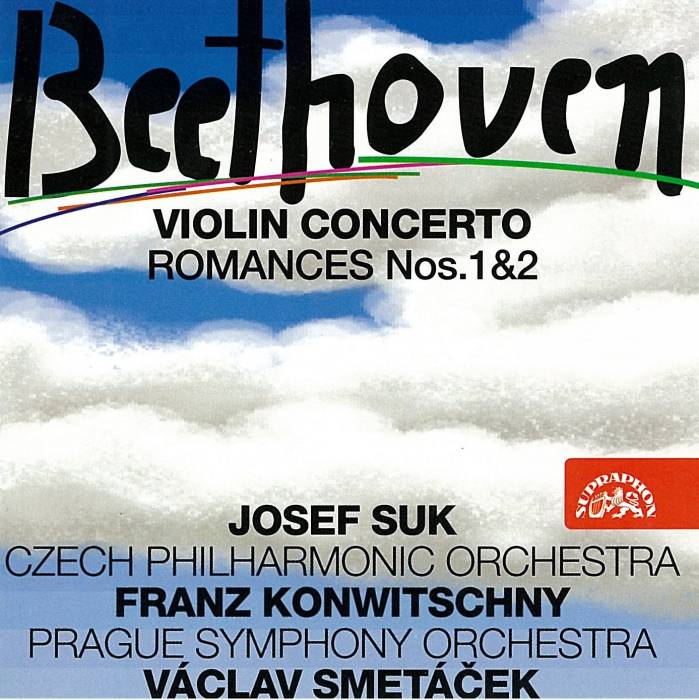
Josef Suk and Franz Konwitschny. The conventionally broad opening tutti stands out most for its distinctive woodwind sound and slightly edgy string sound, the latter partly attributable to vintage and source. The musical flow sounds dandy, and when Suk enters, his tone is generally appealing, if not as robust or silky as some others. His approach sounds somewhat laid back and restrained, but also refined and elegant. He does everything right, especially his trills, though his use of vibrato may be a bit heavy. It's something of an old-fashioned sounding performance, to be sure. The cadenza is his, tailored to his style and approach, and it works as a non-standard version. The Larghetto is very slow and the pulse remains very steady. This allows Suk to create a beautiful mid/late soundworld in his playing, while Konwitschny (and the engineers) again use the Czech winds to excellent effect. The Rondo is again a bit broad, but the violinist and conductor work well together, and Suk plays with enough oomph when needed. Overall, a comfortable, rather, well, easy-listening account.
I have or have previously had this recording by Szigeti, Schneiderhan, Heifetz, Menuhin, Kyung Wha Chung, Sophie Mutter, Milstein, Zuckerman plus the very rare and expensive Leonid Kogan (Columbia SAX2386) and have thoroughly enjoyed them all. I never thought that the exceptional Kogan could be surpassed until I heard Igor Bezrodny (Melodya 390 085). A few years back played this at a bake-off and despite the comment that nobody had ever played classical music at a bake-off before everybody listened and enjoyed the performance; many could not believe that there was only one violinist playing during the cadenza (22min).
www.youtube.com/watch?v=810hVQuwV_Y
www.youtube.com/watch?v=810hVQuwV_Y
Todd A
pfm Member
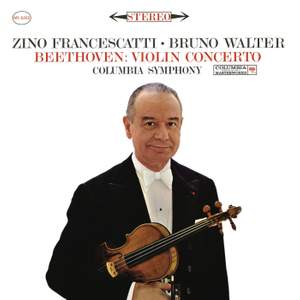
Zino Francescatti and Bruno Walter. Walter opens in his reliable, unassailable for its approach old school way, and Francescatti, while not having the fullest, richest tone, nonetheless exudes elegance and purity in his somewhat restrained playing in the Allegro ma non troppo. His trills sound just wonderful, and he glides along with a sense of studied effortlessness, and gobs of vibrato which may not endear him to all listeners - though it should. The Larghetto sounds beautiful, especially for Francescatti's playing, though it retains a permanent sense of restraint. That's an observation, not a critique. The Rondo again sounds lovely, and again it's Francescatti's show as he plays with a restrained yet still vigorous enough sense of playfulness. As he plays the higher registers, one basks in old time excellence, and Walter stays in the background, only asserting himself - masterfully, of course - in the tuttis. Here's an ancient stereo recording that holds up exceedingly well, and the most recent remastering/re-equalization sounds good enough that one doesn't mind the inherent limitations at all.
Todd A
pfm Member
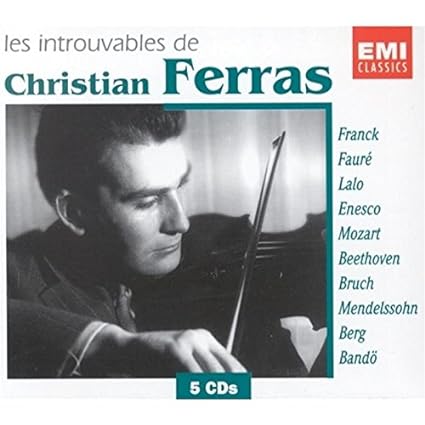
Christian Ferras and Malcolm Sargent. The conventionally timed Allegro opens well enough, with Sargent leading a solid, old-fashioned sounding tutti and the Royal Philharmonic doing its thing. The magic happens when Ferras arrives. There's nothing unusual in his delivery, and I can't quite my finger on why, but everything he does sounds wonderful. His playing is unforced. It's fluid, rich, beautiful, sincere. Maybe it's the sincerity - a construct of my mind, I know - that does it. His vibrato, his portamento, his overall style just gets me like few others. To be sure, there are some passages where one misses the superhuman control of Ehnes or Repin (to pick renditions I really enjoy), and perhaps Ferras plays a bit too stately at times (no, not really), but it just works. Though the cadenza sounds like it was mostly recorded separately, Ferras makes a stronger than normal case for the Kreisler version, making it more musical than others, a couple unsteady passages aside, and that last note elevates yet further. The Larghetto is slow and beautiful and serene and beautiful and moving and beautiful. Ferras floats fantastic fiddling for the lucky listener, and more than in almost all other versions, he plays with true transcendence. The Rondo sounds stately and reserved, like what a high born person might attempt when trying to imitate a rustic sound, and while doing so he delivers something even better than what he is imitating. When he transitions between passages, always smoothly, he can change the tenor of the piece with a note, flawlessly. It flows perfectly. This is one of the best versions in the survey. And it's still only Ferras' second best.
Todd A
pfm Member
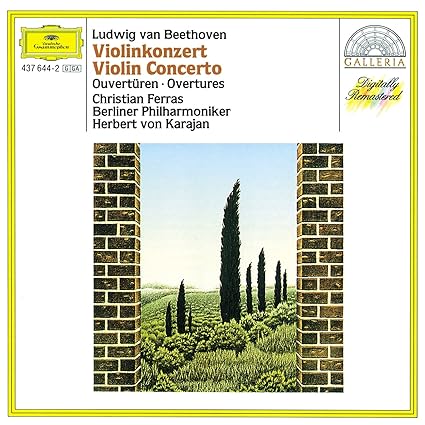
Finally, Ferras 'n' Fluffy. The differences in this version are pretty clear. First, there's Karajan and the superior Berlin Philharmonic. Of course, there's the Karajan sound, a string-heavy, legato-sodden wall of sound, but it's an exquisitely beautiful sound, and smooth, smooth, smooth. Second, there's superior sound, though hardly SOTA today. Third, there's better execution by Ferras, quite possibly aided by extra takes and splices and Karajan's likely insistence on something closer to perfect. Ferras' overall conception isn't greatly different. In the Allegro, it and the whole movement is slightly broader, but his playing is even more flowing, and endless stream of beautiful sound washing over the listener, and the sound is more pure, especially up high. The Larghetto is slower, more beautiful, more elevated. It's all that. Truly. (It helps that even with this now aged recording, the DG engineers captured Karajan's BPO with hints of that string sheen that one only ever hears in concert.) As the movement progresses, Ferras plays in the most rarified manner. The Rondo is again stately, and Karajan adds a nice bit of perfectly executed heft. It's an elevated end to a timeless recording. As I listened, it became clear that Vadim Repin and Patricia Kopatchinskaja came close to surpassing Ferras, but ultimately they join him, establishing a VC triumvirate.
As a bonus, I decided to listen to Ferras 'n' Fluffy in analog, as in a twelve bit LP. Yes, LP has many limitations - noise, limited dynamic range, noise, distortion, noise - but it also almost invariably sounds warmer, thanks to that distortion. And so it proves here. The Berlin strings sound more billowy and glowing, but the real draw here is what Ferras sounds like on vinyl. He sounds like an angel, whether in the slow and beautiful entrance, or in the ethereal, stupid-beautiful trills, or the too good to be true Larghetto, where the massed violins display more of that concert house sheen than in the digital transfer. Basically, while more sonically constricted overall, it offers a gentler, richer, more laid back sound and feel. While certain aspects of the performance suffer, the key components gain, and one just can't get enough of Ferras. This simply reinforces the unquestionable greatness of the recording.

